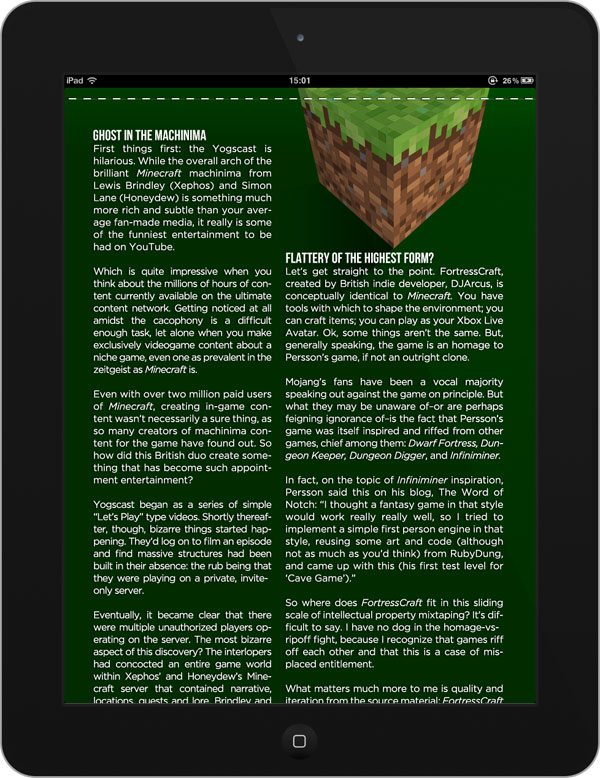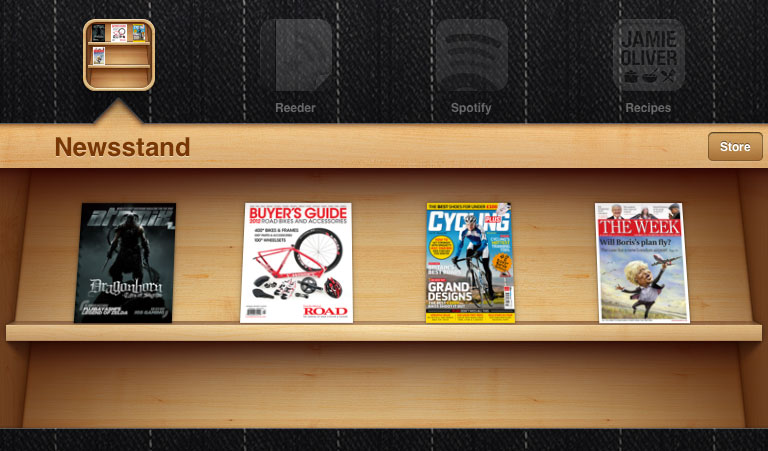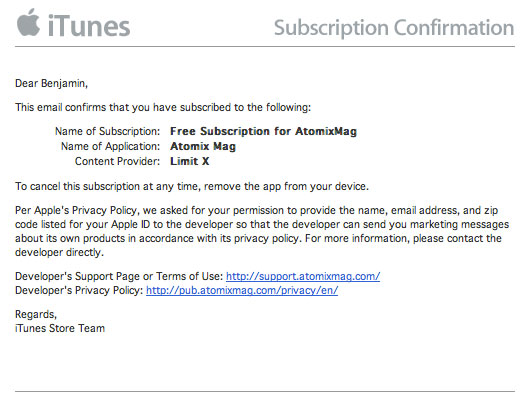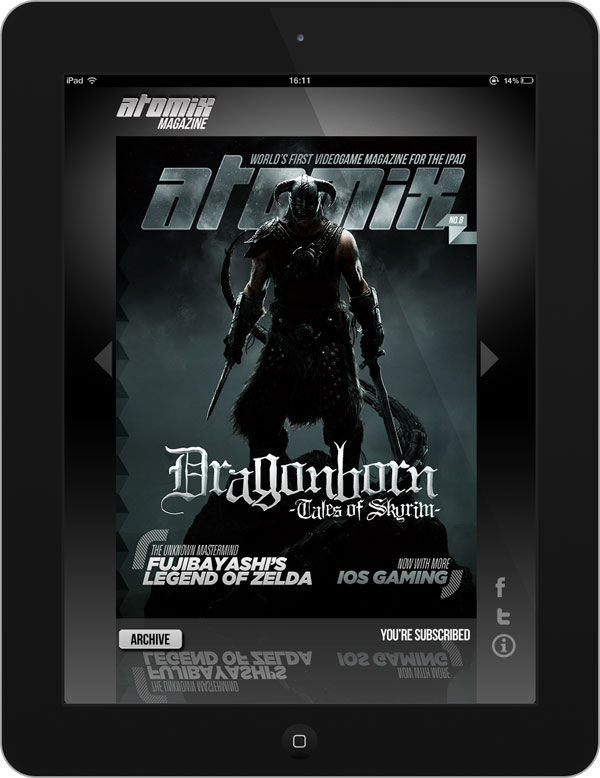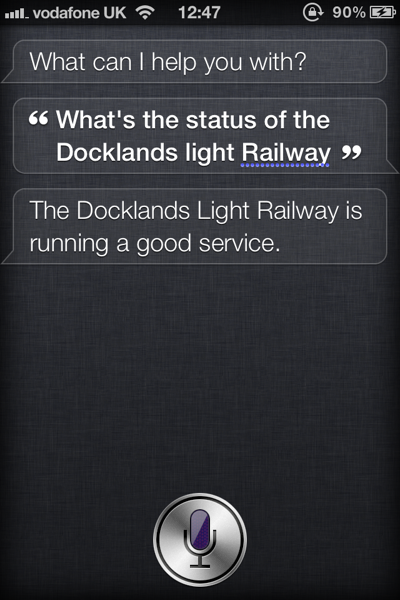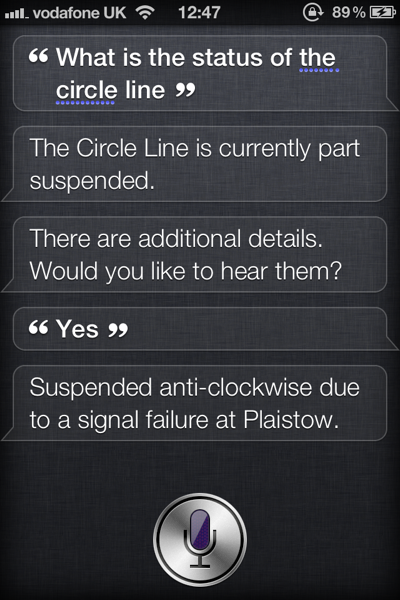Note: The CEO of Monkeybin emailed me with a few corrections to this piece. Be sure to read the updates at the bottom of the page.
I get contacted by quite a few developers of iOS apps asking for me to write a review up on my blog. Occasionally I agree and I'm always completely honest and independent in my thoughts. If I don't like the app, I say so and this is either met with annoyance ("we only wanted you to publish a good review") or with good grace ("thanks for your honest review - we've taken your criticisms on board and aim to fix them for the next release"). Today, I received an email from Monkeybin Studios asking me to review their game "Jumpship Thrust Control". Be careful what you wish for, it might just come true...
This was a bit of an odd one (as you'll see in a moment) so I think I'll review the app by listing the email that was sent below and then dissecting each section. This will hopefully serve as a) a review of the app and b) as a lesson on how not to ask for iOS app reviews (not just from me, but from any blog or review site).
Hi Fellow Gamer!
Please find attached details of Jumpship Thrust Control 2 - a new game on the scene for iPhone and iPad users - we’d love it if you can review it on your site.
Sounds interesting - maybe I'll review it. Shame they didn't include a download link to the game though as it's actually version 2.0 of an app called "JumpShip Thrust Control". The first time I searched for it (copying and pasting the name), iTunes couldn't find it. Also, there is no detail here (or later in the email) of pricing information. I've no idea if this is a paid app (in which case, where is free promotional code so I can download it) or a free app. Turns out this is a free app and you can use In-App Purchases to unlock later levels. If you are asking for a review of your app, be sure to include pricing information (as it's a key review metric) as well as any promotional codes so that a reviewer can use the full app.
Give it a try – we promise the top-notch graphics and the old school side-scroller “action” nature of the game will have you hooked. It’s a throwback to the days of Atari and Commodore 64 video gaming but with 2012 style graphics!
2012 style graphics you say? An interesting pitch when games like Infinity Blade II came out in 2011. By way of demonstration, here is a screenshot of the app:
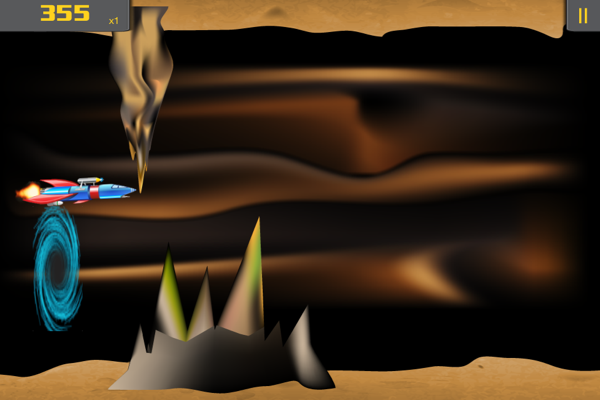
I think that pretty much speaks for itself. An oil type background (looks alright) with some clipart stuck on top. The only bit that I could claim is even modern is that the flames at the back move a little bit but I believe this is a fairly simple effect to do with Cocos2D so we shouldn't put too much stock in it.
When I say “new game” Jumpship Thrust Control is actually a completely re-vamped and much improved version of an existing game from the team at Monkeybin Studios; you have to steer a spaceship through many different types of beautiful but hazardous terrain, navigating many evil obstacles in the way!
When I first read this sentence, I thought "ah good, at least they admit it's a rip-off game" but then they go on to say that it's a remake of one of their old games! I think you'll find that this exact game mechanic has been popularised oh so many times before. Here's a small history of these games:
- Super Cobra (Atari game from 1983 - the original game of this type I believe)
- Helicopter Game (Flash game made in 2004 - the most well known on the internet)
- Helicopter (iPhone version of the above two games - blatant copying in 2009)
That's just a very quick run through how this game has appeared over the years but there are hundreds of copies with different types of vehicle ranging from tractors to spaceships. This is just another one of those that doesn't even try to avoid the obvious link in that the first level is "cave" where every helicopter version of this genre starts. Why is a spaceship in a cave (and are they sure it's a cave?). They could have at least tried a funny parody to make this game different in the same way that Baby Monkey (Going Backwards On A Pig) did with the platforming genre, but no, it's just a shameless copy.
Gamers said the previous version was too difficult and there was nothing to cater for the serious gamers over the casual gamers.
Let's clarify something here; there are casual gamers and there are serious gamers. Serious gamers play on the PS3 and Xbox, casual games play on the Wii and on mobile phones (with the possible exception of Infinity Blade II which is console quality on the iPhone). This is a casual game by the fact that it's horribly repetitive and is the sort of thing you play on the tube when you've finished reading the paper.
The many improvements in the new version include 3 different player modes (beginner, intermediate and expert) plus 5 new terrains to master and easier controls for the spaceship; there’s also a training mode built in to get you up to speed with controlling the spaceship before you try the beginners’ level for real.
New terrains and level difficulty does not a "serious gamer" game make. If they'd wanted to make it more competitive they should have put in some sort of peer-to-peer mechanic where two people start at the same time on different devices and the first one to die loses. If they'd wanted to make it more engaging over a long time period (rather than a pick up and play kind of game) then they should have put in a levelling system with spaceship upgrades (which you could charge real money for with In-App Purchasing). Adding a difficulty level isn't going to make all the Battlefield 3 and Skyrim players drop their controllers and pick up this app instead.
Just to make your life easier, we attach a couple of reviews we have already written that highlight some of the key features of the game. Perhaps you can cut and paste some of the comments and claim them as your own review?! (Just thinking of your time. :))
This was the part of the email where I made up my mind to do a review of the app. You can download and read their prewritten reviews: review #1 and review #2.
It's difficult to know where to start but this is sort of behaviour is what I hate about the app industry in many ways. There are thousands of apps out there but they are hard to find unless you get coverage in the right places. That does not mean you email blogs with pre-written reviews asking them to "claim them as your own". Just don't do it. If you want to have your app reviewed, you have to accept that people may not like it sometimes. Take their criticism, and improve your app. It's insulting to be given pre-written content as you're basically saying to the reviewer "we don't trust your judgement or other write-ups - just use our content".
That's not to say you shouldn't provide text to a reviewer, but it should be done as a press release. That way, they can pick and choose any interesting elements (e.g. "this is the first game to use x feature") and write it into their review without physically copying / pasting. You can also include reviews from other real people that show off good features of your app, particularly if you've had good press coverage from other outlets. But don't ever write your own reviews and ask people to use them. That is incredibly underhand and doesn't do either the journalism or app development industries any favours.
Thanks in advance for taking a look at our game and Happy Jumpshipping!
I've got a few thoughts on the app which I haven't covered above so I'll quickly list them:
Levels - there is only 1 level included with the game followed by 4 trial levels that you get a little distance with before being asked to make an In-App Purchase. There is also a boss level which can be purchased. Both In-App Purchases cost 69p which is fair enough but this isn't detailed anywhere in the app description. The description says "5 great new landscape levels", the "what's new" text says "5 NEW LEVELS", and the email I got said "5 new terrains to master". At no point does it say you'll need to purchase these until you're in the game. It's a free game, so it's understandable you'll have to pay at some point, but it's deceptive to list "5 levels" everywhere when you are actually only getting one with your download.
Bugs - it's buggy as hell. On my second go on the first level, my ship would no longer blow up. Here's a photo of something that just shouldn't happen on a game thats main bit of code is "if ship hits wall, ship explodes".
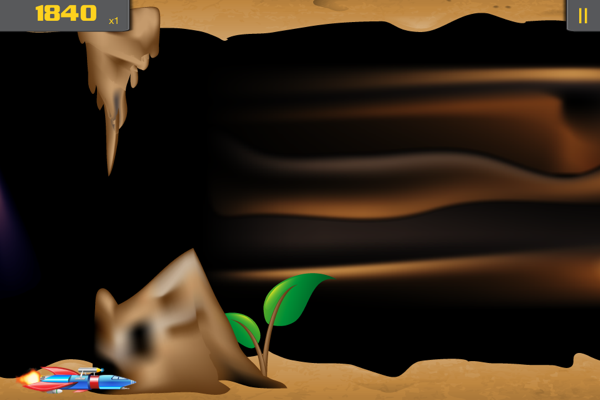
As well as that issue, the UI would freeze if I closed the app and came back to it whilst it was on the pause menu. Music would still play but I couldn't touch anything so had to force quit the app. That would be annoying if you were on a high-score streak and got a text message or a phone call.
Training - training mode is apparently designed to be a place where you can't crash in order to get you used to the game. They don't tell you this anywhere in the app though so you'd be forgiven for wondering what is going on as the game never ends, you can't crash, and no power-ups or walls appear anywhere.
Power-ups - there are power ups littered through the game (with icons that look like they were plucked from windows 95) but no description of what they do. You have to learn by trial and error that a blue orb means you can delete a bit of level or that something that looks like a move cursor is actually a power up to shrink you temporarily.
Summary
Overall the game is just plain awful. When you take into account the deception around In-App Purchases and that they are trying to get reviewers to post pre-written reviews, it becomes a despicable game. Very little thought has gone into gameplay or design and the only reason I even downloaded it was as an example of how to demonstrate what not to do.
In terms of how you should market your apps, I can strongly recommend putting together a good media pack such as the one outlined by Retro Dreamer (linked to from iOS Dev Weekly Issue 4, a must subscription for iOS developers). I have a media kit for my apps such as Highlights which has some screenshots, information, and release notes that allow any reviewers to have a complete overview of the app. If you follow that guide, you'll find you get a lot more responses from app reviewers than if you follow the example taken by Monkeybin Studios.
Update (12th December 2011): I replied to the email to let them know I'd put this review up and got the following response:
Hi Ben,
Thanks for your review. We respect your opinion and we have taken notes of our mistakes and your sugesstions. Hopefully we'll do better in future. We respect your judgment, pre-written reviews were just because of the fact that many webmasters may receive hundreds of emails daily and they may not find a time to write for every one.
Anyways, Thanks again!
I have respect for a company that actually replies to negative criticism so that's good at least. I still think the app can be vastly improved and hopefully we'll see that happen in this case at some point.
Update (15th December 2011): Today I received an email from the CEO of Monkeybin to let me know that the person who contacted me regarding writing a review was not in fact an employee of Monkeybin but instead a freelancer who had operated outside of their remit.
Hi Ben,
My name is Haakon Langaas Lageng, and I am the CEO at Monkeybin. You have been in touch with ***, and I would like to point out that *** is not a Monkeybin employee.
We hired them as a freelancing marketing manager to do the promotions for JumpShip Thrust Control, and it got out of hand. They were free to do the promotions the way they thought would be best, since we were pressed on time doing other projects. It resulted in methods that is not up to Monkeybin's ethics or standards, and not how we want to be perceived by the gaming community.
As the CEO of Monkeybin, this is of course completely my responsibility. Unfortunately, what was happening here slipped my eyes. I found out only yesterday what has been going on.
I just saw on your site that *** sent you an "explanation" on the 12th December, and I am sorry they got around doing that before I put the brakes on.
If you are going to publish what I just wrote here, please omit *** name. They made some bad judgements, yes, but in the end, as I said, it is all my responsibility.
Thank you for your time.
It takes a lot of guts for a CEO to claim ultimate responsibility for an error by a contractor rather than trying to use it as an excuse and I applaud Haakon for it. Let this be a lesson to everybody that you should fully research anybody you ask to promote apps for you and ensure you stay on top of what is being done in your companies name.
